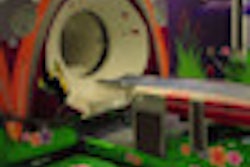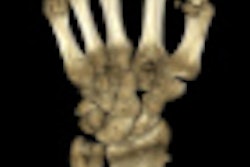ASIR has been shown to be a valuable processing method for improving image quality and reducing CT radiation dose. The Osaka University researchers hypothesized that it would also improve the performance of CAD for identifying lung nodules on images acquired on a CT scanner with garnet-based detectors, said presenter Masahiro Yanagawa, MD.
To test their theory, the researchers studied 35 patients who had received chest CT scans acquired with both standard and low-dose protocols. ASIR was used to reconstruct each 0.625-mm-thick image at three different levels.
Lung VCAR software (GE Healthcare, Chalfont St. Giles, U.K.) was then applied, and its results were retrospectively compared with the reference standard. CAD's overall sensitivity for lung nodules increased significantly for both standard and low-dose images after using ASIR, although it came at the expense of increased false positives.
"The ASIR technique has the potential to improve the performance of CAD even using low-dose CT," Yanagawa told AuntMinnie.com.



















